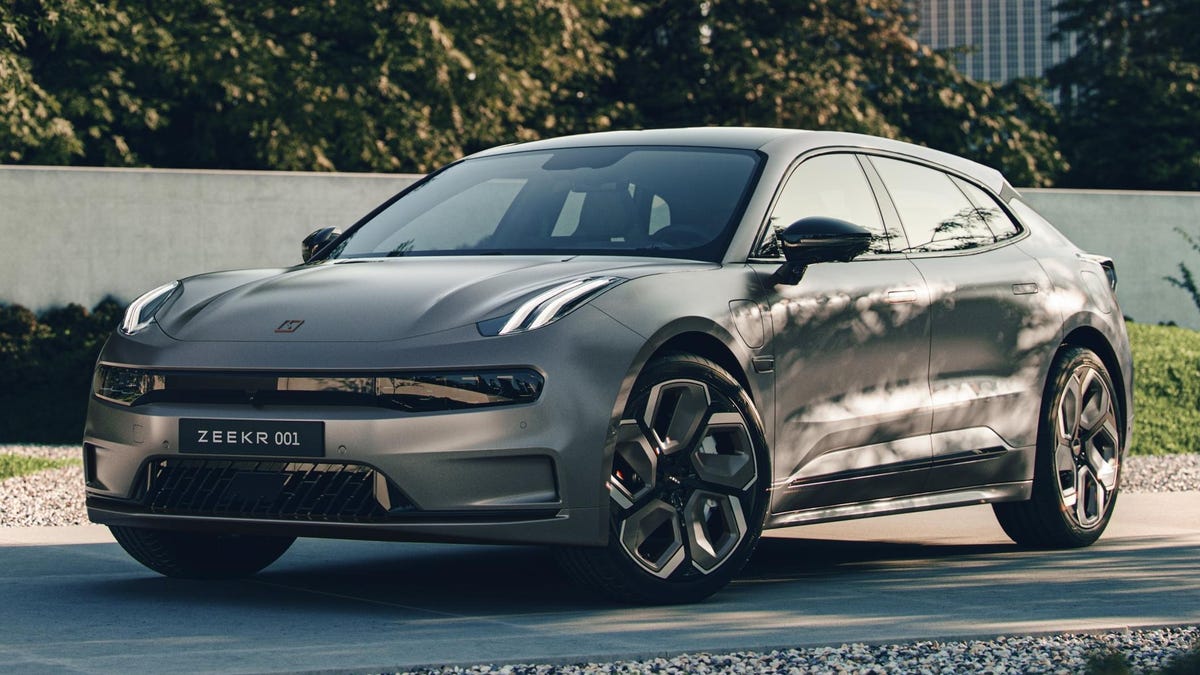Whether you have a problem buying a Chinese EV or not, that still doesn’t change the fact that China is investing heavily in its electric future, or the fact that the build quality and engineering gaps continue to close between Chinese and legacy Western automakers — with some Chinese automakers even surpassing the Western ones. Without Geelys and BYDs available to test drive in the U.S., though, it can be hard to gauge just how good China’s EVs have gotten. Recently, Kevin Williams at InsideEVs spent a week at the Beijing Auto Show, driving more than a dozen cars and spending time in many more. His takeaway? “We’re cooked.”
Even before Williams had the opportunity to drive anything, just spending a little time at the auto show itself showed just how far Chinese automakers have come:
The show itself was packed, incomparable to the ghost-town auto shows back home during their press preview days. Everywhere I looked, there were people: influencers, Chinese media, international media. Clearly, China missed the memo that these events are dead.
I’d later learn that the auto show had more than 100 new model debuts and concepts. That’s a far cry from the Detroit Auto Show last September, which only featured one fully new model. Two other models were refreshed versions of current cars already on sale. None were electric.
In China, the showroom floor was filled to the gills with new electrified models from every single domestic automaker. They all had something to prove, and by god, they were trying. There were hundreds of models on the floor from dozens of brands, most of them just as compelling as what I had seen the day before from Geely.
Most brands had doors that closed with a solid thunk, with soft-touch materials in the correct places, when appropriate to the vehicle’s price point. And no matter the price point, they all had responsive, integrated vehicle interfaces that were quick, pretty, and ubiquitous.
A basic infotainment system in any given moderately priced Chinese EV beats the brakes off some systems in cars that cost six figures.
There are reasons for that, but namely, Chinese EVs are so good now—as is much of its urban infrastructure—that concerns about range or charging just aren’t as pertinent to the average consumer as they once were.
Essentially, while Western automakers are still focused on things like range and charging speed when it comes to selling EVs, those issues have already been addressed in China, which means Chinese automakers now have to find other ways to attract customers in a country with far more competition than there is in America and Europe. That means working more closely with large tech companies to offer features that will get potential customers’ attention. In fact, some tech companies have even started selling cars. You may not be able to buy an Apple Car, but in China, phone manufacturer Xiaomi will happily sell you an electric Taycan alternative called the SU7.
He also found that, compared to everything else that was at the auto show, the quality of the Buick Velite 6 just wasn’t good enough even though, supposedly, Buick is a legacy automaker that “should” have these new Chinese automakers beat. “The delta of quality, connectedness, and value between the Velite 6 and any of the equivalent of the mid-tier Chinese EV vehicles I had experienced that day, was startling,” Williams wrote. “By comparison, the Velite 6’s small screens and grey plastic interior were downright depressing to the full-width, super brilliant screens in any given Chinese EV.”
The article ends on a bit of a downer, saying:
If the U.S. and Europe get what they want—a crackdown on Chinese imports—it doesn’t feel like it would result in better cars. It feels like it would keep buyers of those markets locked to cars that aren’t executed as well. It’s nakedly protectionist because deep down, all of the Western auto executives and some hawkish China pundits understand that Chinese EV and PHEV models are more compelling than what European, other Asian, and American brands have come up with.
I’ve seen it with my own two eyes. We’re cooked.
There’s so much more to the article than we could possibly hope to summarize here, and even if we could, a full summary would do a disservice to a fantastic post. So be sure to head over to InsideEVs to read the whole thing. Whether you’re in favor of keeping Chinese cars out of the U.S. or not, it’s necessary reading if you want to understand the global EV market, and we promise you won’t be disappointed you took the time to take it all in.

